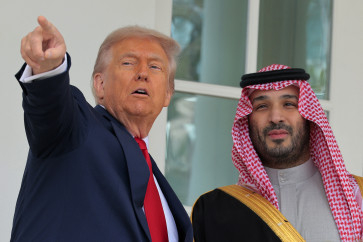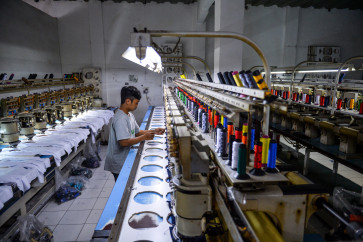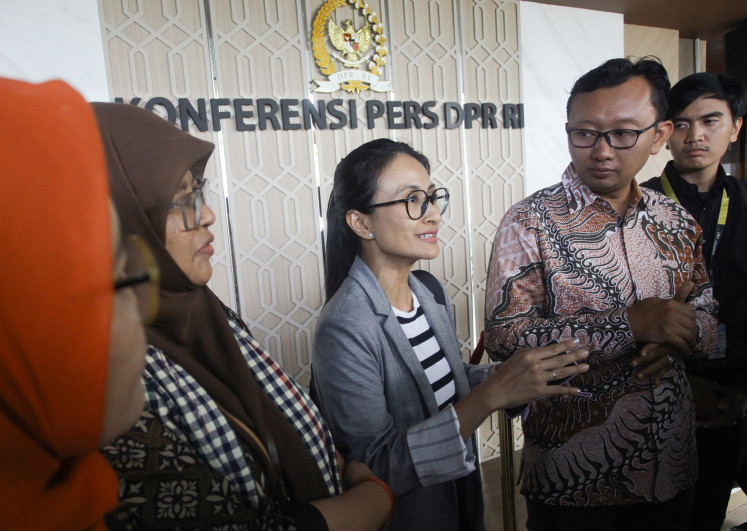Popular Reads
Top Results
Can't find what you're looking for?
View all search resultsPopular Reads
Top Results
Can't find what you're looking for?
View all search resultsGeothermal development continues to move at snail’s pace
The development of geothermal energy remains sluggish while interest from oil and gas companies wanes because of continued low crude prices
Change text size
Gift Premium Articles
to Anyone
T
he development of geothermal energy remains sluggish while interest from oil and gas companies wanes because of continued low crude prices.
US-based Chevron is currently in the middle of auctioning off two of its geothermal assets, the Mount Salak and Darajat geothermal fields in West Java, estimated to be worth a combined US$3 billion.
State-owned oil and gas firm Pertamina, state-owned electricity company PLN, Japanese trading house Marubeni, Japan-based diversified company Mitsui and local firms Medco and Star Energy are the six remaining companies in the running to win the fields. The auction winner is scheduled to be announced in January.
The Energy and Mineral Resources Ministry’s geothermal director Yunus Saefulhak said since global oil prices dropped more than a year ago, oil and gas companies had been trying to compensate by selling off their geothermal assets.
“Many oil and gas companies who develop geothermal energy have been suffering from the low prices as operational costs become higher. In the end, they end up having to sell off many assets, including geothermal ones, as the value is pretty high,” he said following a meeting at the House of Representatives on Monday.
Chevron, the second-largest US oil producer after Exxon Mobil, has slashed jobs, canceled drilling projects and sought asset sales in response to a slump in global energy prices over the past two years.
The energy company, based in San Ramon, California, is aiming to sell its main Asian geothermal operations in Indonesia and the Philippines.
Despite the bleak outlook, there still remained hope. Unlike oil and gas companies, geothermal-focused companies were still interested in Indonesia’s geothermal projects, Yunus said.
“Although oil prices remain low, there are still many companies focused on developing the downstream geothermal sector that remain interested in our fields,” he added.
Yunus cited a consortium made up of Italian Enel Green Power and local Optima Nusantara Energi, which recently won the tender for the Way Ratai field in Lampung, Sumatra, with a power-generating capacity of 55 MW.
Geothermal company KS Orka Renewables, a joint venture between Icelandic company Hugar Orka and Zheijang Kaishan Compressor, also recently took over the 240 MW Sorik Marapi field from OTP Geothermal, a joint venture between Origin Energy and Tata Power. Yunus said the project was let go because Origin’s core business was natural gas, which also suffered from low oil prices.
“This is proof that there are still many companies out there that are interested in geothermal energy,” he said.
Geothermal energy, created by the heat of the Earth, is able to generate consistent power while producing almost no greenhouse gases, making it the perfect alternative to the widely abused fossil fuels.
Indonesia is estimated to have approximately around 29 gigawatts (GW) of geothermal potential and the government has targeted geothermal energy production of 7,156 MW by 2025. This would make Indonesia the biggest geothermal energy producer in the world.
The current electricity capacity using geothermal energy is around 2,650 MW, making up 5 percent of the total installed power plant capacity of about 53,000 MW.
The development of geothermal energy is even more important now that the House has ratified the Paris Agreement on climate change, with the Indonesian government having a carbon emissions reduction target of 29 percent by 2030.
Meanwhile, the House has called on the government to establish a state-owned company specifically focused on geothermal energy development as it would also strengthen the funds needed for exploration and exploitation activities.
House deputy speaker Agus Hermanto argued that this could be done by combining existing state-owned companies and their subsidiaries.
“This can be done by combining Pertamina Geothermal Energi, PLN Geothermal Energy and Geo Dipa Energi,” he said.
Business players are uncertain that such a state-owned firm would be necessary.
The Indonesian Geothermal Association considers Indonesia’s geothermal industry’s continual growth as enticing to investors. However, many investors still feel that they were not given business certainty despite the fact that the country has already issued a Geothermal Law two years ago.
“The biggest obstacle is that the only off-taker available is PLN, and it needs subsidies to buy geothermal-produced electricity,” chairman Abadi Purnomo said.
The government has prepared a government regulation on the feed-in tariff, which it hopes will accelerate investment in geothermal energy. It is currently still being reviewed at the State Secretariat.










